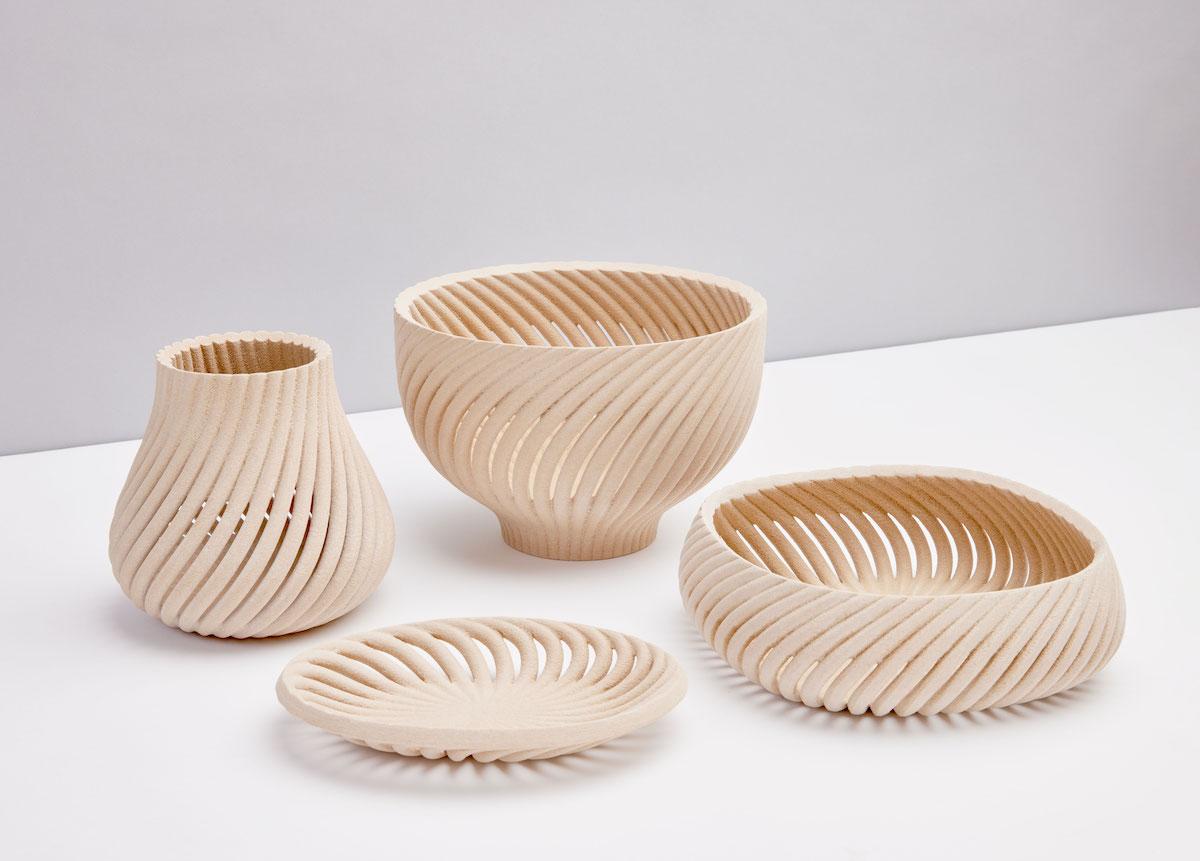This Startup is 3D-Printing Wood Made From Upcycled Sawdust (Exclusive)
Published May 6 2021, 8:00 a.m. ET

Even though 3D-printing naturally produces less waste than other manufacturing processes, it's unfortunately the norm for 3D-printed creations to be made of plastic-derived materials. So to combat that, a startup called Forust is 3D-printing wood products — and its raw material is upcycled sawdust and other byproducts from the wood industry that would otherwise be considered waste.
“The Forust technology allows us to take something that was previously wood waste and re-materialize it into exquisitely beautiful and useful things,” William McDonough, a world famous sustainable architect (who is not involved with Forust, but is a supporter of the technology) said in a statement sent to Green Matters.
“By allowing millions of trees to remain in place in their forests, Forust is launching a highly evolved technology for the circular technosphere that supports and celebrates stewardship of the natural, regenerative, and diverse biosphere, making it not only smart, but wise,” McDonough added.

Desktop Metal just acquired Forust, a 3D-printing wood startup.
On May 6, 2021, Massachusetts-based 3D-printing manufacturing company Desktop Metal announced that it recently acquired Forust, a Massachusetts-based startup that is 3D-printing wood with a goal of “developing a greener future.”
“Sustainability and reusing waste streams are key objectives of creating Forust,” Andrew Jeffery, CEO of Forust, tells Green Matters exclusively via email. “We want to be part of a revolution creating great products using on-demand technologies while also reducing the amount of waste that goes into the atmosphere and landfills.”
Here’s how Forust is 3D-printing wood products from wood waste.

Here’s how Forust’s 3D-printing process works, according to press materials shared with Green Matters.
Forust starts with two wood industry byproducts: wood flour (a fine, filtered sawdust) and lignin (a natural polymer found in the cell walls of woody plants). Forust then uses advanced CAD 3D-printing software, proprietary materials, and Desktop Metal’s binder jetting mass production platforms to upcycle the wood industry waste into “isotropic, high-strength, sustainable wood parts.”
Specifically, Forust spreads out layers of specially-treated sawdust, which are then treated with a biodegradable and nontoxic binder to turn them into wood. Then, digital grain is printed on every layer of the wood before traditional wood treatments are applied, such as sanding, staining, and dyeing.
The parts can then be used to make furniture (including chairs and cabinet doors), luxury interior parts (such as gear shifts and other parts for yachts and homes), various consumer products (such as fruit bowls and flowerpots), and even in architecture.
“With the Forust process, we are upcycling sawdust waste and turning it into usable, beautiful products for a number of applications — interior design, buildings, furniture, architectural products, and consumer home goods,” Jeffery tells Green Matters exclusively.

“The inspiration for Forust was to begin with sawdust and end with forests,” Jeffery added. “Our process is based on extensive research conducted over the past decade in the field of hardwood lumber, leading to complex and elegant finished structures.”
Forust claims that its process can emulate nearly any wood grain (including a unique grainless wood), adding that its 3D-printed products are “digitally rematerialized wood, with grain that flows across the entire part and can be sanded and refinished.” These products are nothing like particle board, an affordable wood alternative made by pressing wood chips with a synthetic binder (and commonly seen at places like IKEA).
“Our finished pieces are indistinguishable from traditionally manufactured wood products you would find in a store,” Jeffery said. “The additive manufacturing process literally becomes invisible.”

If you want to get your hands on a 3D-printed wood product, Forust has launched a collection of products made with several independent designers and brands. The products are now available for purchase on Forust's website, including a line of wood vases and bowls designed by fuseproject's Yves Béhar.